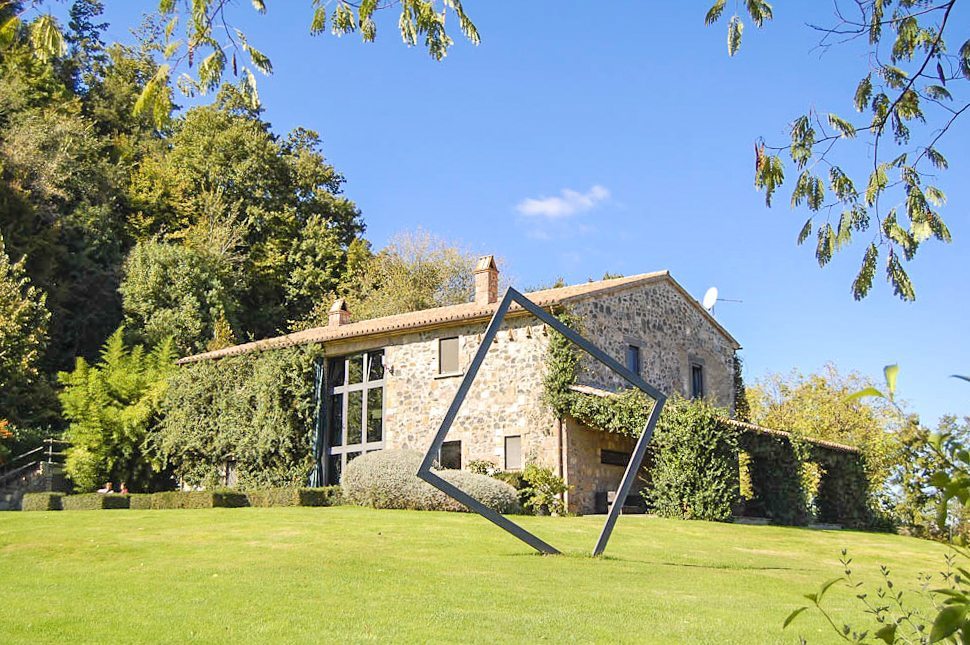Culture & Surroundings
Spending your holiday at Relais Villa La Trinità means interspersing history, art and natural pristine beauties of Tuscia with enjoyable day-trips to Rome and The Vatican (a 45 minutes drive).
We are happy to help you plan your guided visits in advance and can suggest some specific itineraries
Illustrious foreign travellers, most of whom within their Grand Tour of Italy, passed through Tuscia along the Via Francigena on their way to Rome noting down their impressions: from Thomas Hobbes to John Milton, from George Bradshaw to Augustus John Cuthbert Hare, from John Ruskin to George Dennis and Nathaniel Hawthorne.
Women writers also described Tuscia with a particularly sensitive, sharp and innovative approach, namely Mary Berry, Mariana Starke, the countess of Blessington Margaret Power, Edith Wharton and Katharine Hooker.
In the early 20th Century Joseph Hilaire Belloc, William Davies and Egerton R. Williams got enchanted by the mingling of Tuscia’s natural and artificial beauties: the splendid hilltops, the original purity and beauty of the Renaissance art, the memorable view of some of the most beautiful villages in Italy such as the astounding Civita di Bagnoregio.
ROME & THE VATICAN GUIDED TOURS
Roaming around Vatican City is one of the most exciting things you could do during your visit to Italy and Rome. Tours are available every day, let us help you find the one that suits you the best.
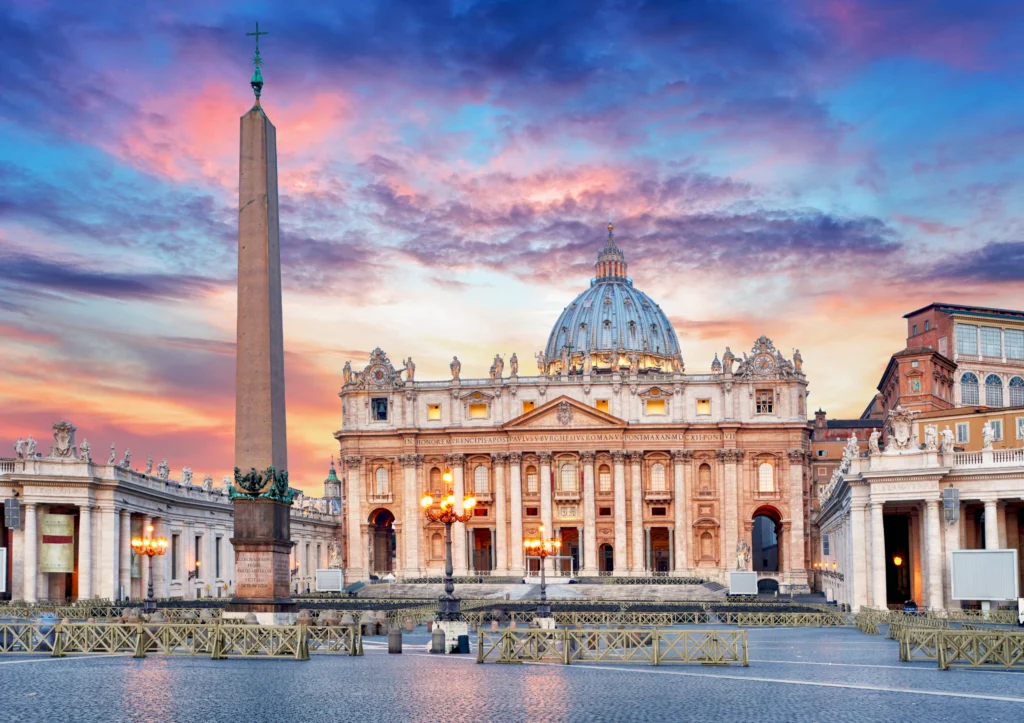
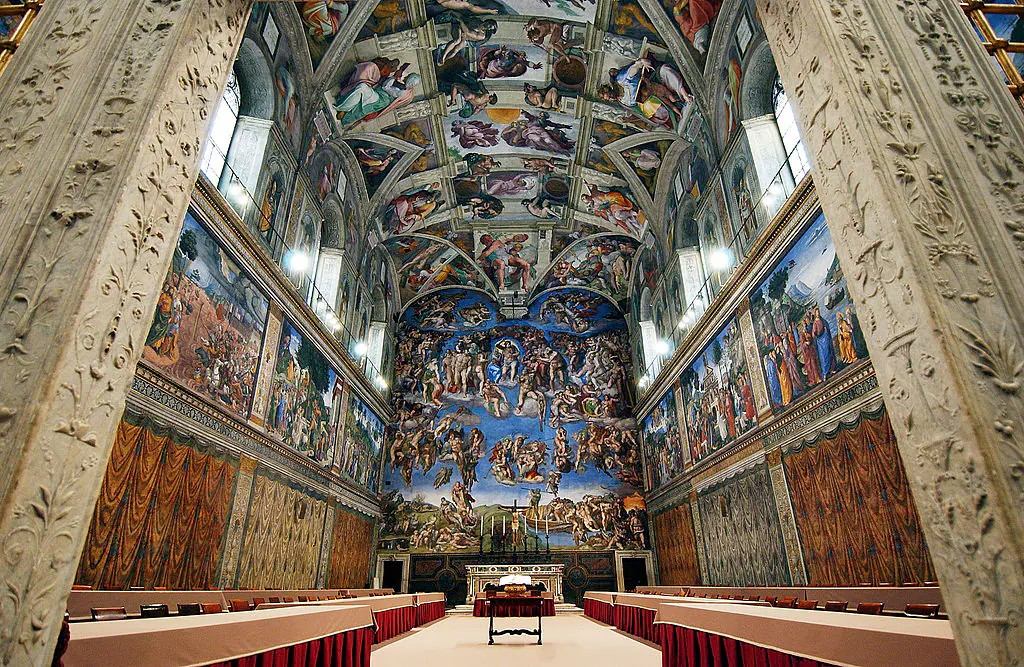
We can book your tours in advance, so as to avoid lines. Guided tours of the Vatican will provide you with a unique opportunity to explore Vatican museums, the Sistine Chapel, Saint Peter’s Cathedral, and the City of The Vatican itself.
We can provide private cars with driver to enjoy in total comfort all the best high-fashion and luxury shops in the city.
We can book your tours in advance, so as to avoid lines. Guided tours of the Vatican will provide you with a unique opportunity to explore Vatican museums, the Sistine Chapel, San Peter’s Cathedral, and the City of The Vatican itself.
We can provide private cars with driver to enjoy in total comfort all the best high-fashion and luxury shops in the city.

ETRUSCAN – DISCOVERING THE JEWELS OF AN ANCIENT CIVILIZATION
Tarquinia’s harsh white rock is barely protected by a grassy carpet and is interspersed by the world-famous (UNESCO World Heritage Site) painted tombs plunging into the Etruscan daily life by colourfully representing plays, dances and banquets. Well worth a visit is the National Museum housed in the magnificent 16th century Palazzo Vitelleschi.
Sutri Its 7-hectare park is a wealth of archaeological sites, landscape and nature within the regional network of parks and reserves. Spread over a plateau of tuff, in the upper part there is Villa Savorelli (home of the Park) whilst in the valley, in the stretch close to the urban center of Sutri, you can visit some of Tuscia’s most important archeological beauties such as the spectacular amphitheater, the necropolis and the Church of Our Lady del Parto (formerly a Mithraeum).
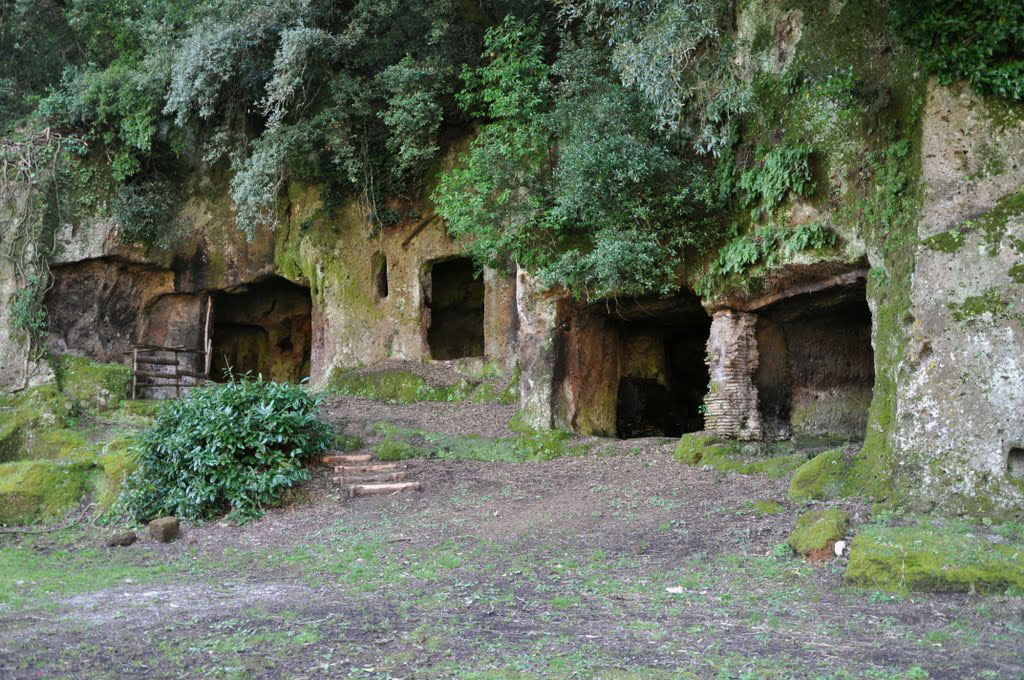
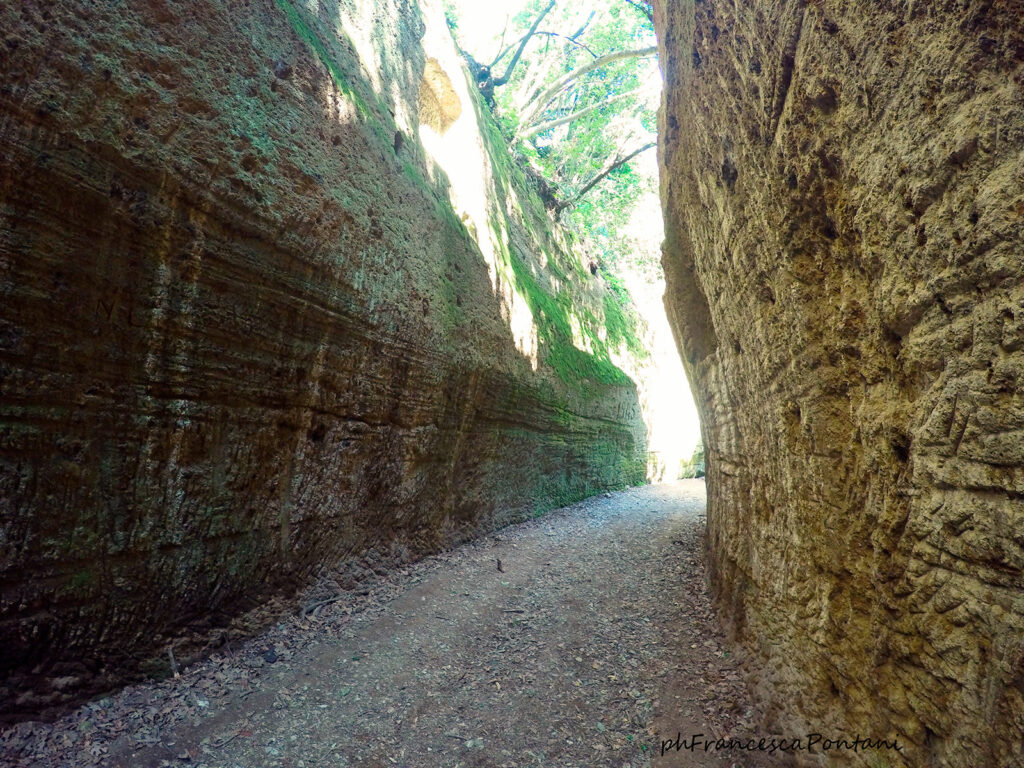
Tuscania, Norchia, Castel d’Asso, Vejo, Barbarano Romano are also of interest with their necropolis engraved in tuff, a type of rock made of volcanic ash ejected from a vent during a volcanic eruption. Following ejection and deposition, the ash is compacted into solid rock used in Etruscan civilisations dating back to the VI-II centuries B.C.. Vulci boasts remains of roads, baths, nature reserve.
The imposing Vie Cave (excavated roads), known in Italian as Cavoni deserve a special tour: they form an impressive road network linking an Etruscan necropolis and several settlements in the area surrounding Sovana, Sorano and Pitigliano. They consist of trenches excavated to form vertical cliffs in tuff, sometimes over twenty feet high, possibly serving as an effective defense system against invaders. The Romans incorporated them into part of a road system that was connected to the main trunk of the Via Clodia, the ancient road linking Rome to Manciano (Tuscany) through the city of Tuscania, used for troop movement and commercial traffic.
Tuscania, Norchia, Castel d’Asso, Vejo, Barbarano Romano are also of interest with their necropolis engraved in tuff, a type of rock made of volcanic ash ejected from a vent during a volcanic eruption. Following ejection and deposition, the ash is compacted into solid rock used in Etruscan civilisations dating back to the VI-II centuries B.C.. Vulci boasts remains of roads, baths, nature reserve.
The imposing Vie Cave (excavated roads), known in Italian as Cavoni deserve a special tour: they form an impressive road network linking an Etruscan necropolis and several settlements in the area surrounding Sovana, Sorano and Pitigliano. They consist of trenches excavated to form vertical cliffs in tuff, sometimes over twenty feet high, possibly serving as an effective defense system against invaders. The Romans incorporated them into part of a road system that was connected to the main trunk of the Via Clodia, the ancient road linking Rome to Manciano (Tuscany) through the city of Tuscania, used for troop movement and commercial traffic.

MEDIEVAL TOWNS, VILLAGES AND CASTLES
Viterbo, whose Medieval peperino stone walls and San Pellegrino Quarter are the best preserved in Europe, also known as Città dei Papi, with its Papal Palace, venue of the first papal conclave in the 13th century. Orte and its underground fountain, cisterns, dovecotes and snow well. Montefiascone whose formidable fortress was home to the siege of the Patrimony of St. Peter’s Rector, then a papal summer residence. Barbarano Romano and Blera with their wooded valleys crammed with Etruscan antiquities for the joy of trekkers.
Tuscania and its almost archaic Romanesque churches of San Pietro and Santa Maria Maggiore on the gently rolling Rivellino Hill, where views over the Marta Valley were greatly appreciated by D.H. Lawrence. Civita di Bagnoregio, the “Dying City”, tremors unstable on its rocky foundations in the Calanchi valley. Castel S. Elia and its secluded national monument, the Romanesque Basilica S. Elia. Several fights for ownership of more than 1000-year old strongholds and palaces scattered all around Tuscia depict tumultuous Roman noble families and the papal and imperial powers within.
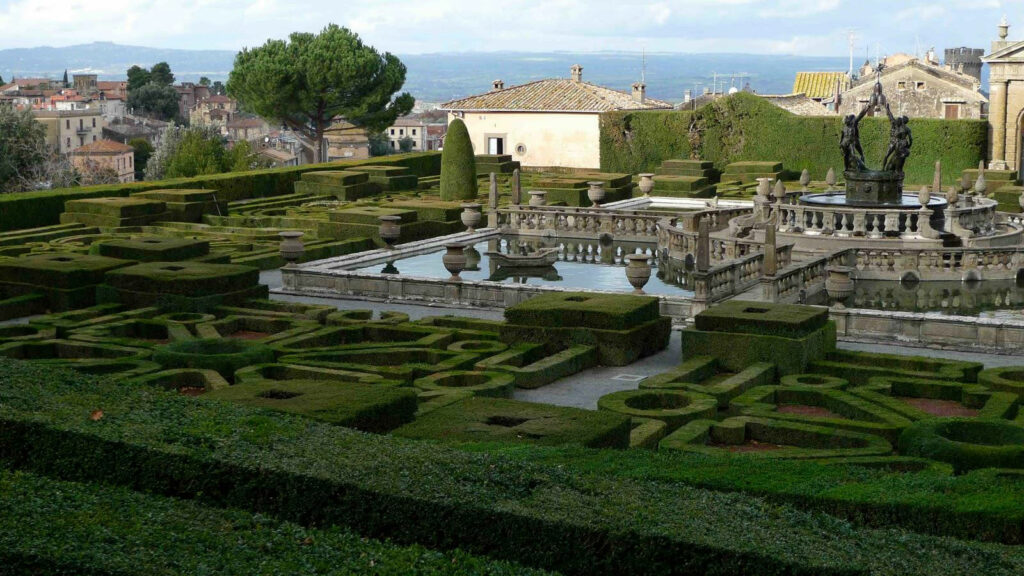
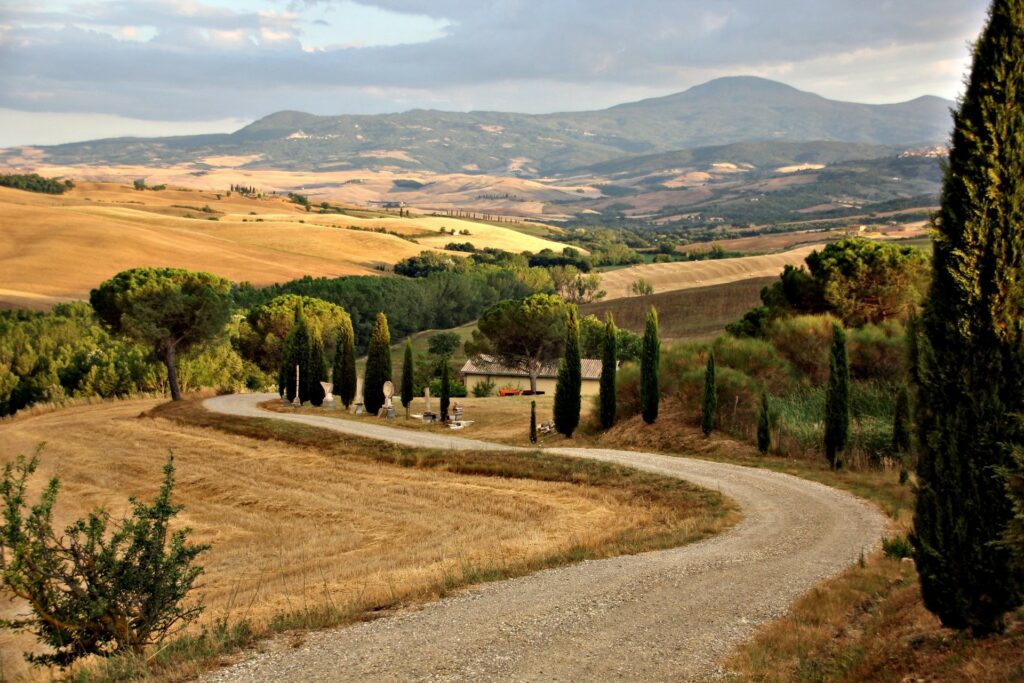
THE VIA FRANCIGENA - IN THE FOOTSTEPS OF PILGRIMS IN THE MIDDLE AGES
The Via Francigena, running from Canterbury to Rome (once known as “Romea”), and passing through our estate La Trinità, represents a historic itinerary, a major route for pilgrims heading for the Holy Land since the Middle Ages. The Via Francigena has been traced thanks to a 994 travel diary written by Sigerico, Archbishop of Canterbury, on his way home after being enthroned by the Pope.
An itinerary in Tuscia from Proceno, a postal inn, runs through gorgeously undulating hills to Acquapendente, a most important stop for pilgrims due to the precious reliquiary from the Holy Land now preserved in the Cathedral’s crypt; Bolsena, where the Corpus Christi miracle happened for the first time in 1263; Montefiascone, a Medieval town; Viterbo, one of the cornerstones of the entire historical itinerary, rich in lodging facilities.
THE VIA FRANCIGENA - IN THE FOOTSTEPS OF PILGRIMS IN THE MIDDLE AGES
The Via Francigena, running from Canterbury to Rome (once known as “Romea”), represents a historic itinerary, a major route for pilgrims heading for the Holy Land since the Middle Ages. The Via Francigena has been traced thanks to a 994 travel diary written by Sigerico, Archbishop of Canterbury, on his way home after being enthroned by the Pope.
An itinerary in Tuscia from Proceno, a postal inn, runs through gorgeously undulating hills to Acquapendente, a most important stop for pilgrims due to the precious reliquiary from the Holy Land now preserved in the Cathedral’s crypt; Bolsena, where the Corpus Christi miracle happened for the first time in 1263; Montefiascone, a Medieval town; Viterbo, one of the cornerstones of the entire historical itinerary, rich in lodging facilities.

A forked route on both sides of Lake Vico makes it easier to travel through the Cimini Hills depending on the season: on one side it reaches Ronciglione and its small church of S. Eusebio, on the other it runs through the chestnut woods near the Cistercian Abbey of San Martino al Cimino to Vetralla, where a little country street leads to the Church of Santa Maria in Forcassi. It then passes through our estate, La Trinità, towards Capranica, Sutri, Monterosi, finally heading towards Rome.
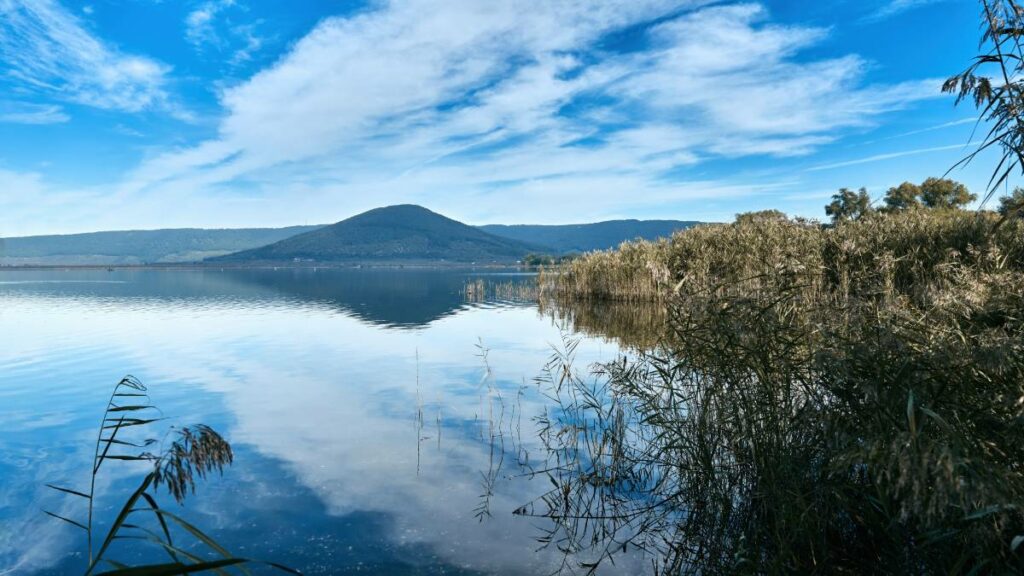
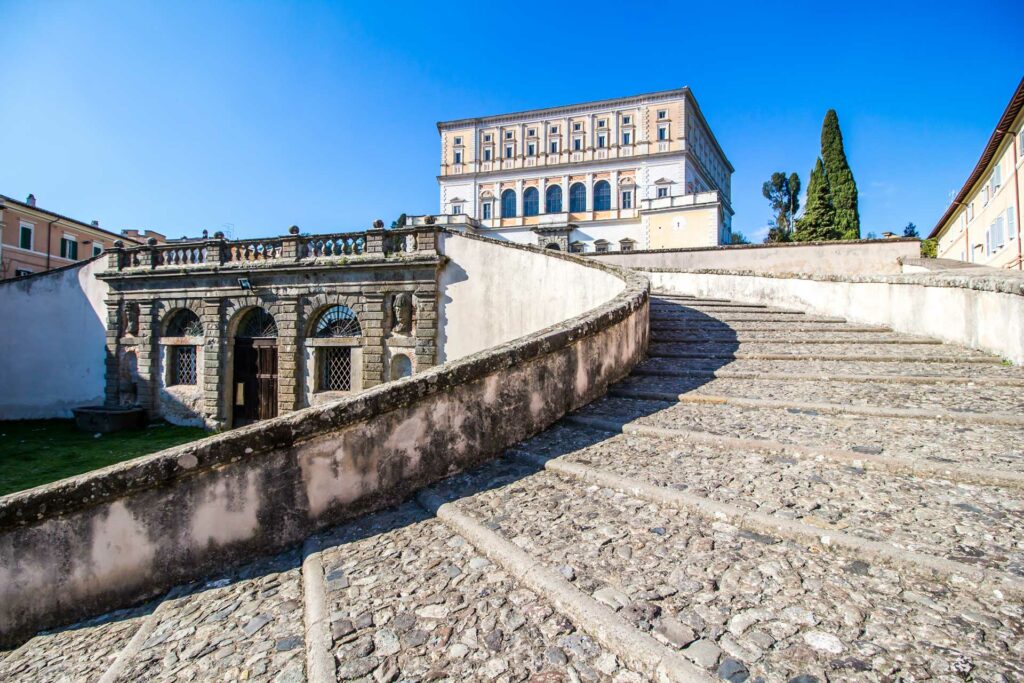
FARNESIAN – EXPLORING FARNESE FAMILY RESIDENCES
Some of the most important monuments in the environs, strongholds, castles and palaces were built by the Farnese family, and Tuscia was the springboard for their rapid climb into power, which allowed them to dominate Italy and Europe. The family’s most illustrious member was Alessandro, elected as pope in 1534 as Paul III, who summoned the Council of Trento in 1545.
This itinerary includes: Viterbo, Carbognano, Caprarola, Ronciglione, Nepi, Lake Bolsena, Valentano, Gradoli, Latera, Cellere, Farnese, Canino and Ischia di Castro, near Castro, the capital of the Farnese Duchy drawn by Antonio da Sangallo The Young, destroyed in 1649 by Innocenzo X Pamphili’s troops and never rebuilt.
FARNESIAN – EXPLORING FARNESE FAMILY RESIDENCES
Some of the most important monuments in the environs, strongholds, castles and palaces were built by the Farnese family, and Tuscia was the springboard for their rapid climb into power, which allowed them to dominate Italy and Europe. The family’s most illustrious member was Alessandro, elected as pope in 1534 as Paul III, who summoned the Concilio of Trento in 1545.
This itinerary includes: Viterbo, Carbognano, Caprarola, Ronciglione, Nepi, Lake Bolsena, Valentano, Gradoli, Latera, Cellere, Farnese, Canino and Ischia di Castro, near Castro, the capital of the Farnese Duchy drawn by Antonio da Sangallo The Young, destroyed in 1649 by Innocenzo X Pamphili’s troops and never rebuilt.

GARDENS AND LANDSCAPES
Luxuriant historic and private gardens, created by the erudite architectural-naturalistic culture or expressing the refined ltalian style, harbour secular trees, stairways and stone fountains with constantly flowing water, labyrinths and hedges of laurel and box-woods, grottoes, shrub and herbaceous plants of impressive beauty.
Viterbo
Villa Lante in Bagnaia, near Viterbo, is, together with Villa d’Este in Tivoli and the Sacred Bosco in Bomarzo, the most famous Italian Mannerist garden of surprise, typical of the 16th century. It is attributed to Jacopo Barozzi da Vignola, who worked in close collaboration with a reknown specialist, Pirro Ligorio, and a hydraulics specialist, Thomaso Chiruchi. Its main characteristic is the inclusion of a formal garden within a “barco” (park) for a dialogue between the “wild” and the “domestic” sides of nature. The venue, studded with fountains and waterworks, such as the famous stepping cascade, was a status symbol for powerful cardinals.
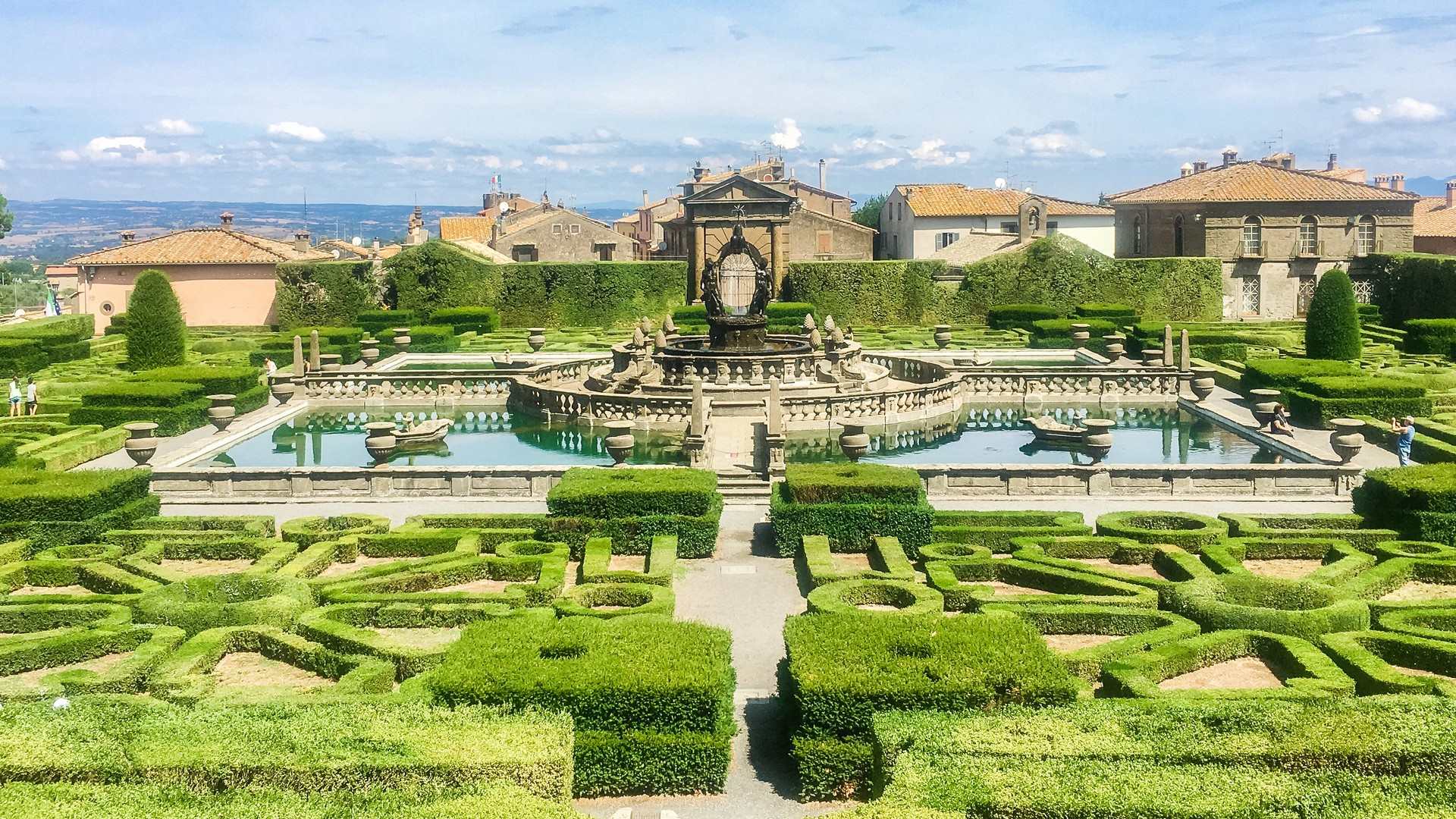
Caprarola
Tuscia is a formidable jewel box for the highest intensity of historical gardens in Italy. Cardinal Alessandro Farnese commissioned Jacopo Barozzi da Vignola to create this magnificent work of art that mingles the architecture of the Palazzo with the beautiful lower and higher gardens. The Pleasure House, the magnificent water chain and the Belvedere fountains are worthy a steep walk up the hillside.
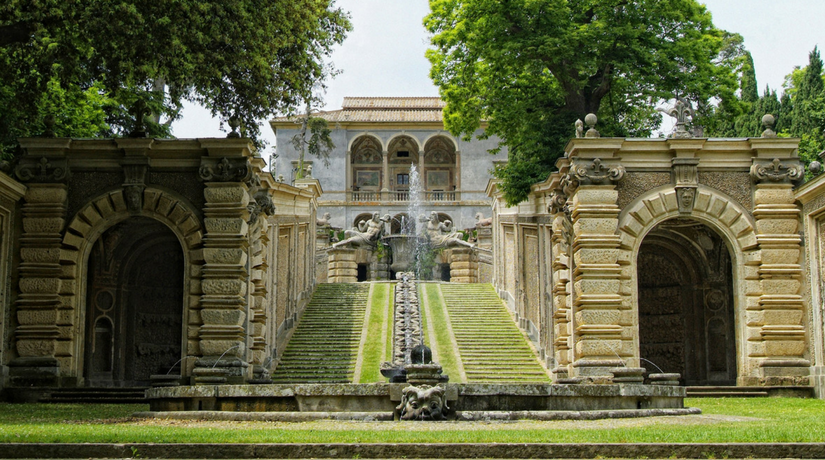
Vignanello
Dating from the 17th century, this garden was made by Marc’Antonio Marescotti and it includes Giardino di Verdura, Giardinetto Segreto, Barco and Barchetto. Ottavia Orsini, whose father created the Sacred Bosco at Bomarzo, patronized the twelve perfectly balanced parterres in boxwood that form a sophisticated geometrical design. Twists and turns of hedges of laurel, cherry-laurel, and guilder roses can be also admired.
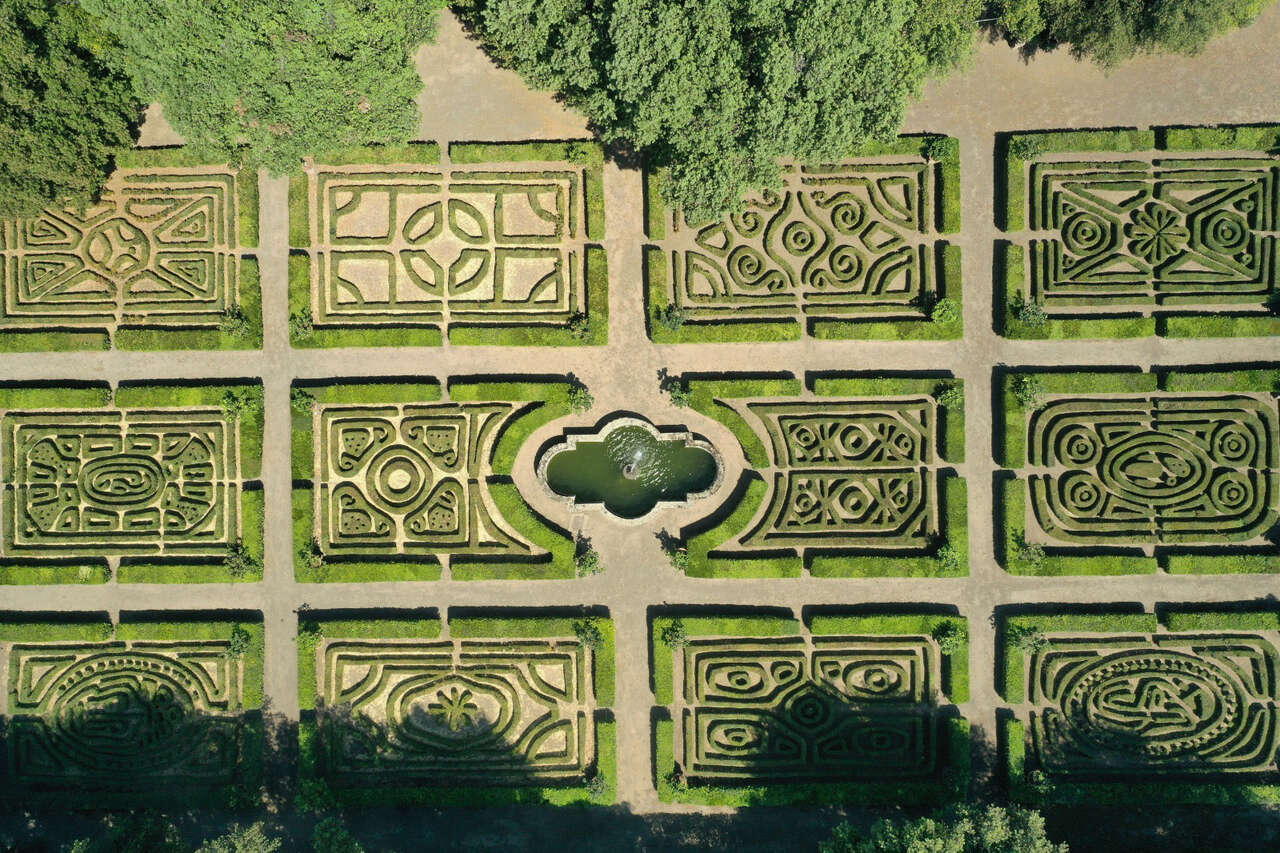
Bracciano
One of the major Italian rose gardens rich in ancient and modern species
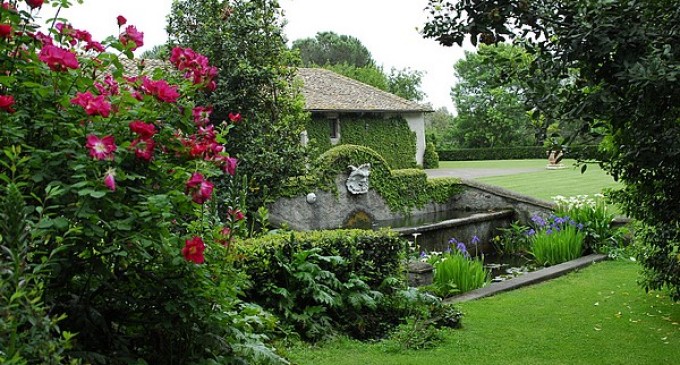
Bracciano
Nine different water sources and two rivers flow, encouraging the development of the vivacious flora
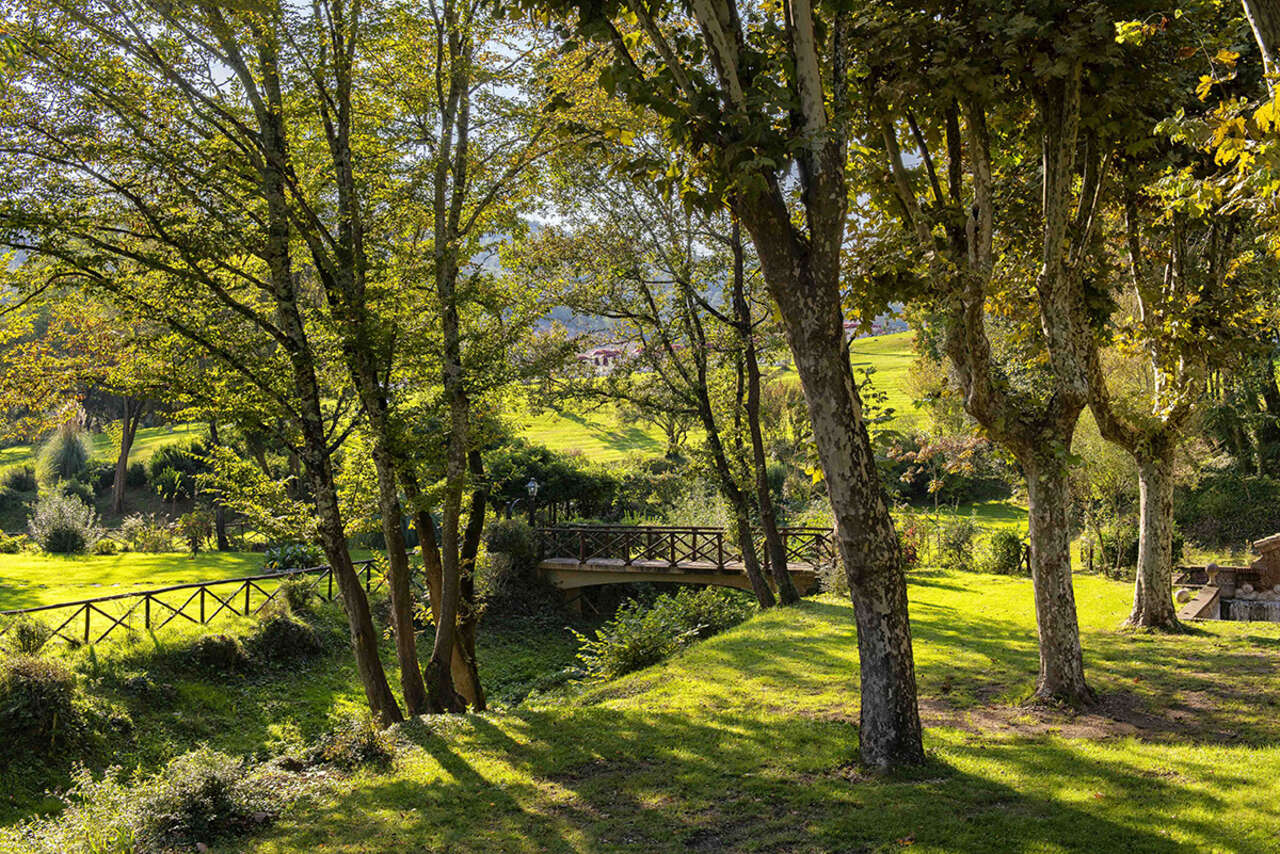
Bomarzo
Characterized by blocks of peperino sculpted into enigmatic figures of monsters, dragons and fountains with water games

Marta
A variegated garden with trees, shrubs, bamboos, flowers, peonies, irises and violets, lilies, poppies and lotus flowers
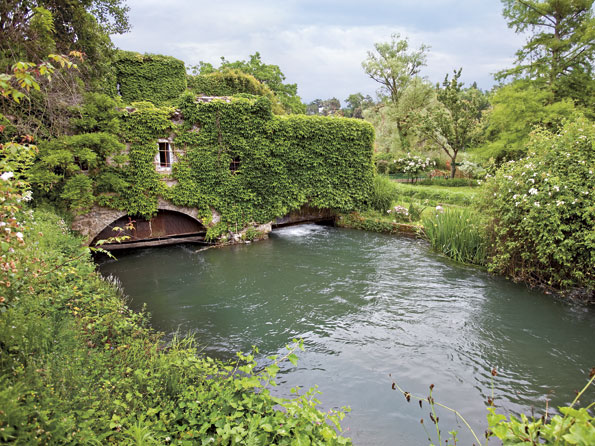
Vitorchiano
The world’s largest collection of tree and herbaceous peonies with over 200,000 plants – April/June
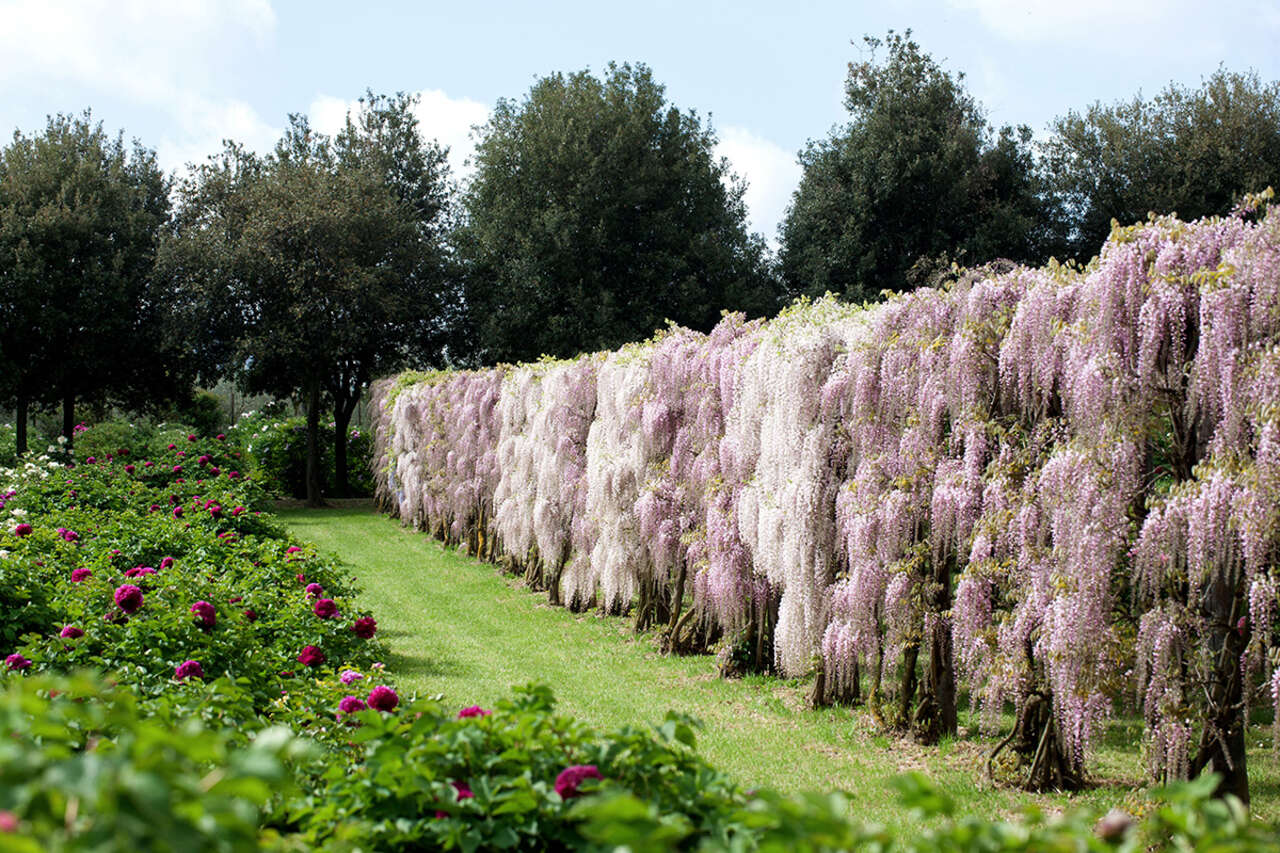
Vetriolo
In the moonlike scenery of the Calanchi valley
